Categories
- Argentina
- Chile
- Antarctica
- Easter Island
- Falklands (Malvinas)
- Bolivia
- Peru
- Uruguay
- Paraguay
- Brazil
- Venezuela
- Colombia
- Ecuador
- Galapagos
- Panama
- Costa Rica
- Cuba
- Nicaragua
- Honduras
- El Salvador
- Guatemala
- Belize
- Mexico
- Latin American Xmas
Pages
- Map of South America
- Home Page
- First week in Latin America – October 2009
- Map of Central America
- Contact Us
- The Jesuit Missions in South America
- A week in Buenos Aires
- Street Art of Buenos Aires
Archives
- October 2011 (3)
- September 2011 (9)
- August 2011 (10)
- July 2011 (7)
- June 2011 (6)
- May 2011 (11)
- April 2011 (10)
- March 2011 (4)
- February 2011 (5)
- January 2011 (6)
- December 2010 (6)
- November 2010 (4)
- October 2010 (8)
- September 2010 (5)
- August 2010 (7)
- July 2010 (5)
- June 2010 (6)
- May 2010 (6)
- April 2010 (7)
- March 2010 (6)
- February 2010 (9)
- January 2010 (4)
- December 2009 (8)
- November 2009 (5)
- October 2009 (2)
Crossing the Andes
15th November 2009
Leaving Argentina for the time being, we crossed the Andes into Chile via a series of lake crossings and bus transport over 2 days with an overnight in Peulla.
.
The blowing snow made for a very nice lake crossing and we could still appreciate the high peaks all around us.
.
The next day we arrived in Puerto Varas, a pretty little town on Largo Llanquihue settled by Germans about 100 years ago. Many of the houses are built with wooden shingles and there is a wonderful view of Volcan Osorno across the lake (on a good day).
.
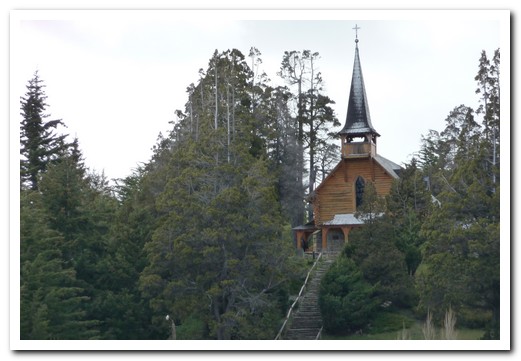
Leaving Puerto Pañuelo in Agrentina by boat

Lago Friás
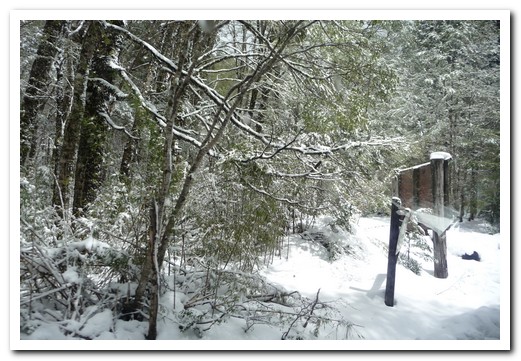
Snow in the rainforest at the Argentine/Chile border (at about 900m)
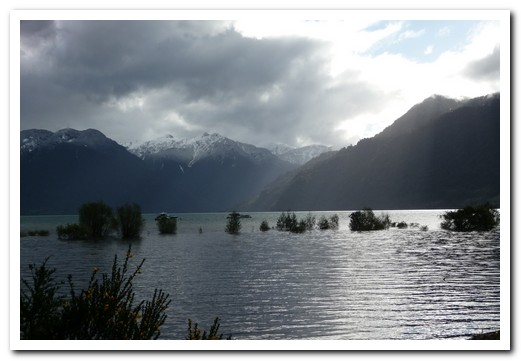
An overnight stop at Peulla
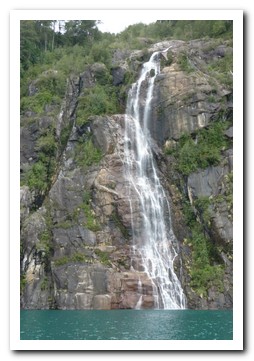
Waterfall into Lago Todos los Santos (also called the Emerald Lake for the green colour)
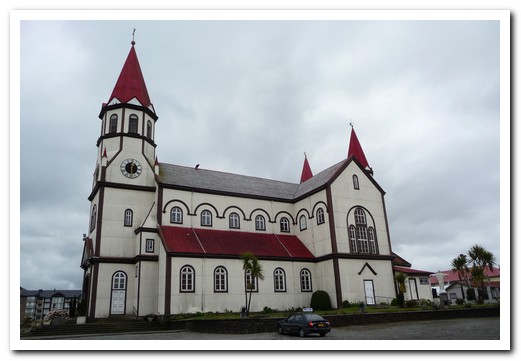
Cathedral at Puerto Varas
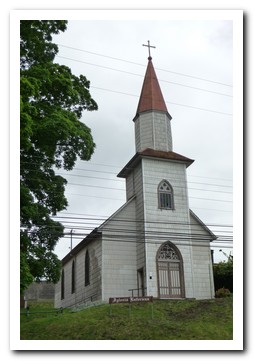
Wood shingled Lutheran Church - Puerto Varas
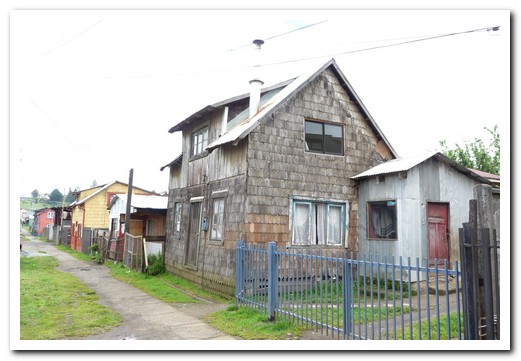
Wood shingled houses at Puerto Varas
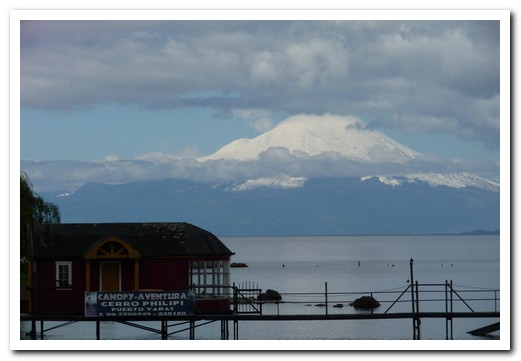
Volcan Osorno
Chiloé Island
19th November 2009
The island of Chiloé lies just off the coast of Chile and is accessed by barge from Puerto Montt. It is lovely and green and rains all the time.
.
It is known for the many World Heritage wooden churches, some with pegs instead of nails. They were constructed by boat builders and are mostly located close to the coast facing the sea.
.
The houses are covered with brightly painted wooden shingles and ox drawn ploughs can still be seen in use. Here they prepare an unusual dish of pork, chicken, vegetables and shell fish called curanto.
.
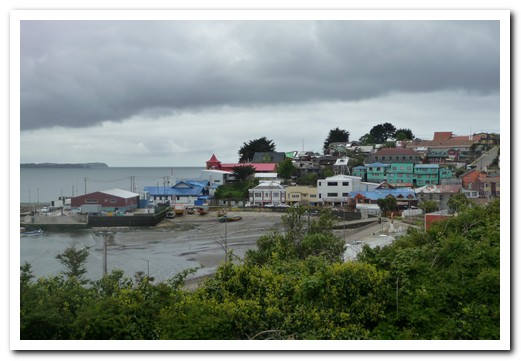
Ancud is on the north west coast
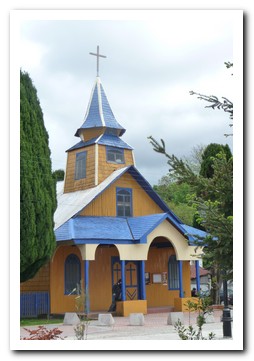
The church at the small village of Quemchi
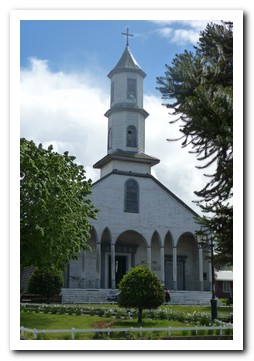
Church at Dalcahue (1849)
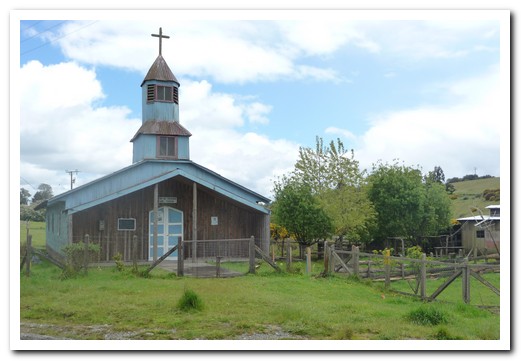
Simple small wayside church
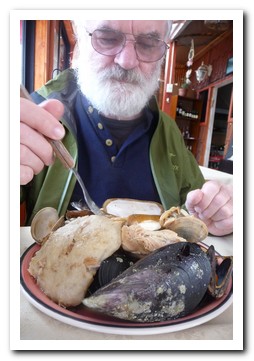
Jeff trying hard to finish all his curanto
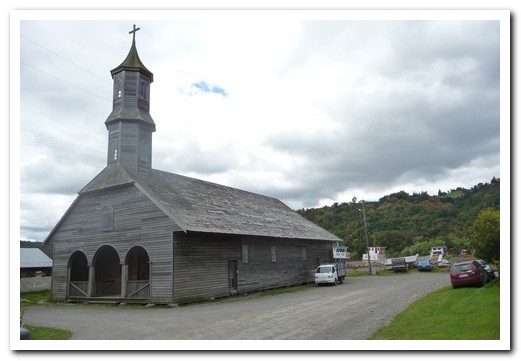
World Heritage church of San Juan (1875)

Tenaún (1767)
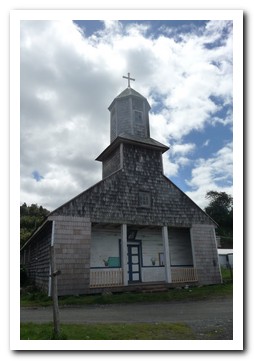
At Calen

Quetalco
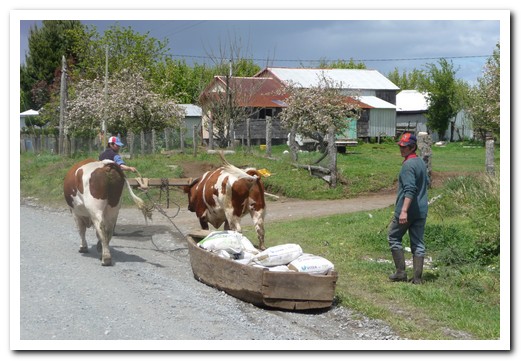
Wooden sled, boat shaped and pulled by oxen, designed for the muddy conditions
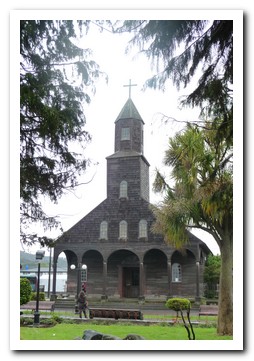
The oldest of the churches at Achao
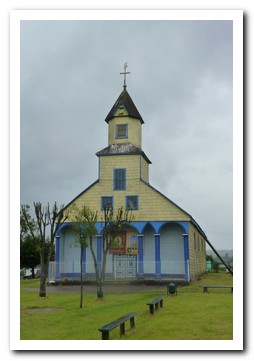
Church at Llau Llao
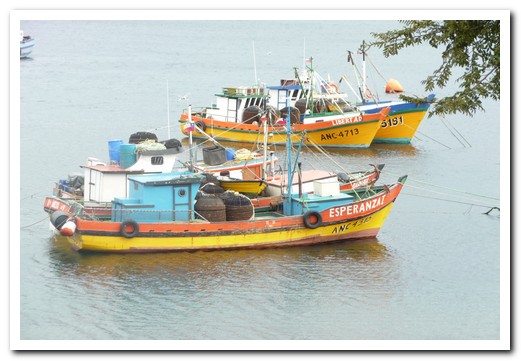
Colourful fishing boats seen all around Chiloé
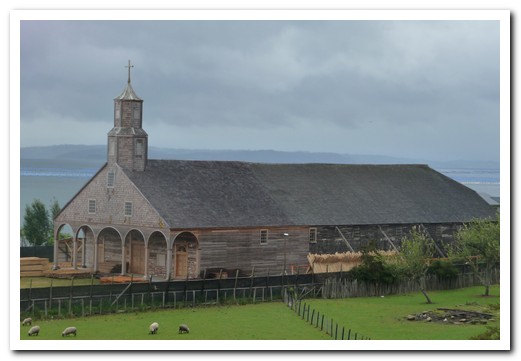
The largest of the churches is being restored at Quinchao
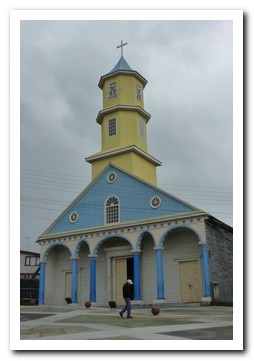
Chonchi
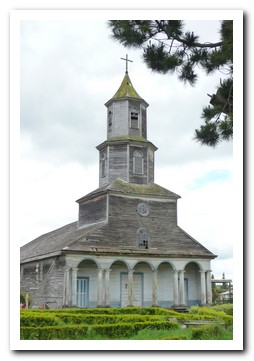
Necrón
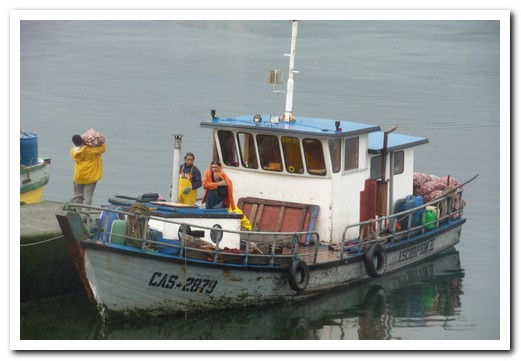
Unloading shell fish in the early morning
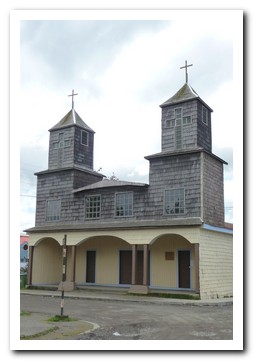
Puqueldón
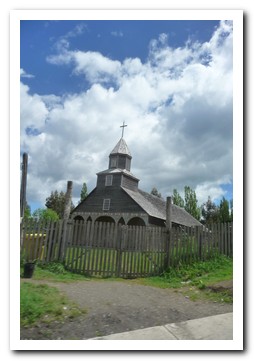
Ichuac
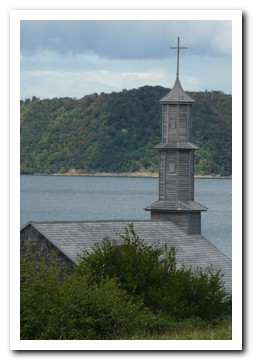
Vilapulli
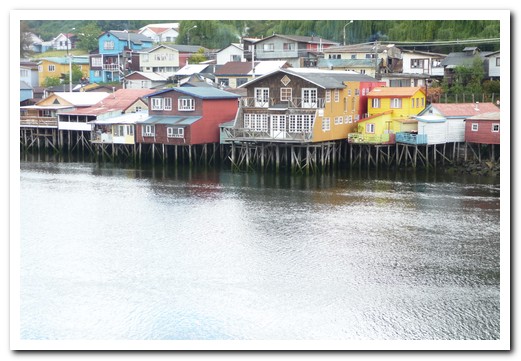
Palafitos on the estuary at Castro
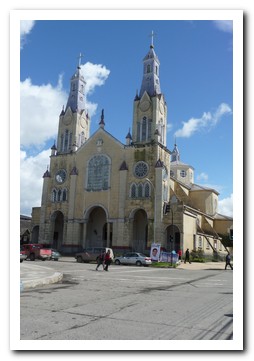
Cathedral at Castro, covered with tin
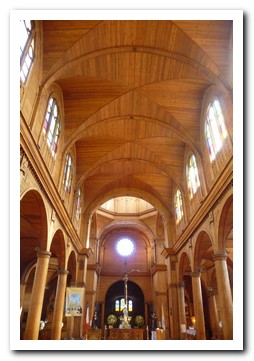
The wooden interior of Castro´s cathedral
Chilean Lake District
27th November 2009
Not being able to walk because of the bad weather, we headed north to Valdivia. Here sea lions laze around on the banks of the river waiting for scraps from the nearby riverside fish market.
.
A short ferry ride away is Corral with its old Spanish fort.
.
We moved onto Pucón on Lago Villarica right at the foot of Volcan Villarica (2800 meters high). The weather did not improve. From here we visited a Mapuche village where we learnt about their culture and had a delicious traditional lunch of horse meat with puree of chestnuts and a soup made from pine kernel.
.
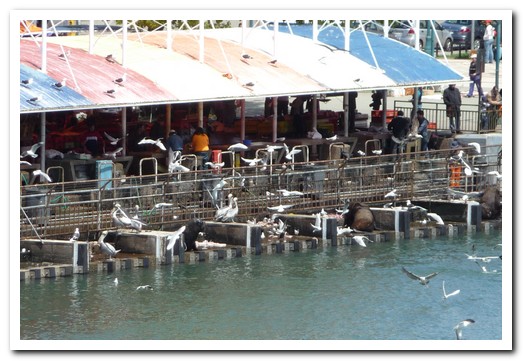
Birds and sea lions wait for scraps at the fish market at Valdivia
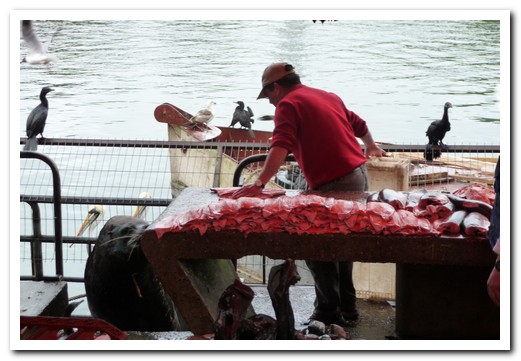
Sea lion and birds getting a feed
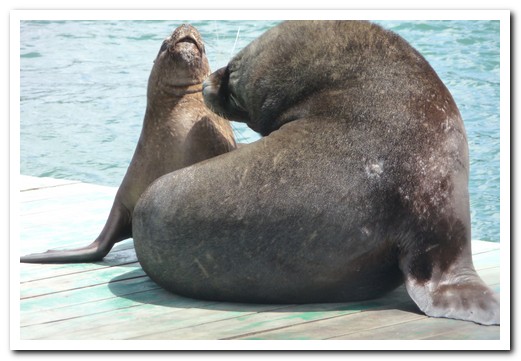
Sea lions on the river bank at Valdivia

The old Spanish fort at Corral
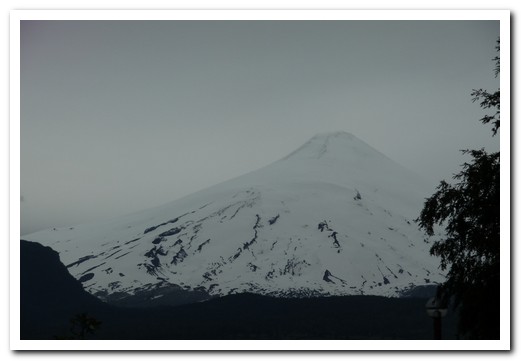
Volcan Villarica from Pucón - in bad weather
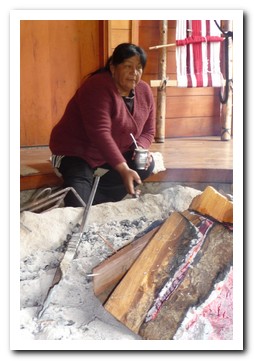
Mapuche woman by the fireplace
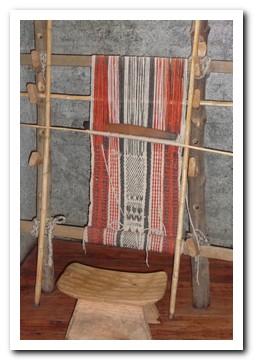
Traditional Mapuche weaving

Macuche mask
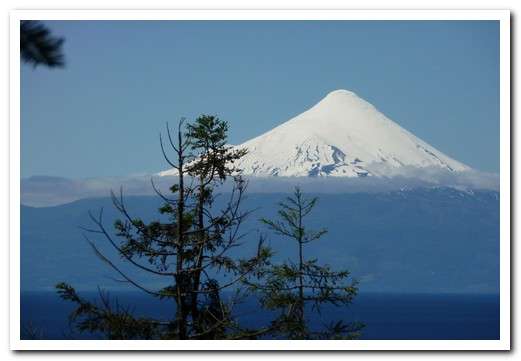
Back at Puerto Varas - Volcan Osorno on a better day
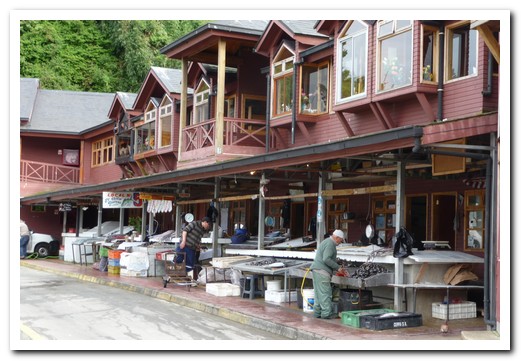
The fish market at Puerto Montt
Chilean Fjords
01st December 2009
From Puerto Montt we sailed south on the weekly Navimag cargo ferry for 4 days between the islands of southern Chile to Puerto Natales.
.
At first we had calm conditions and enjoyed great food and wine. On the 2nd day we reached the open ocean and were seasick for the next 12 hours. We woke to a better 3rd day back inside the fjords with an hour ashore visiting little Puerto Edén, then right up close to the Pio XI glacier (the largest in South America).
.
What a wonderful experience it was and we were sorry to have to disembark in Puerto Natales. We were free to walk all over the ship, including the bridge. The weather was crazy, sun, snow, wind, hail, rain all within hours and cold.
.

The Navimag Ferry
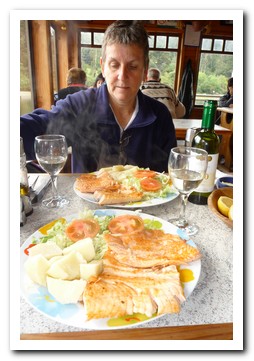
Great salmon and plenty of it!
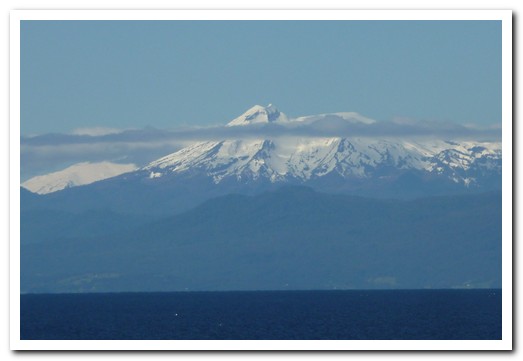
Leaving Puerto Montt behind
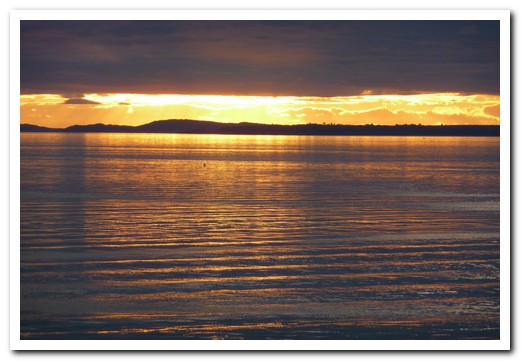
Sunset at sea
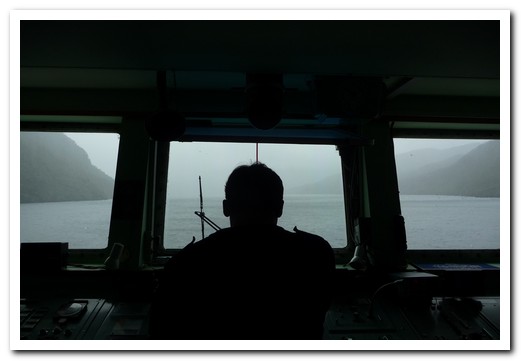
From the bridge as the weather worsens
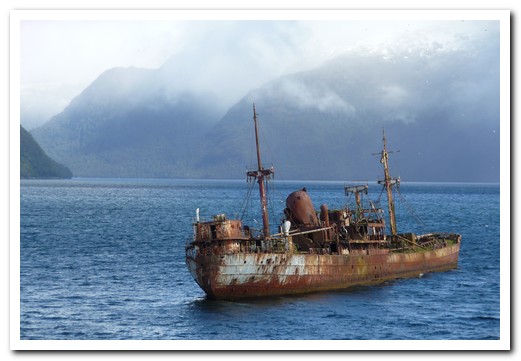
This ship hit the only rock in the channel
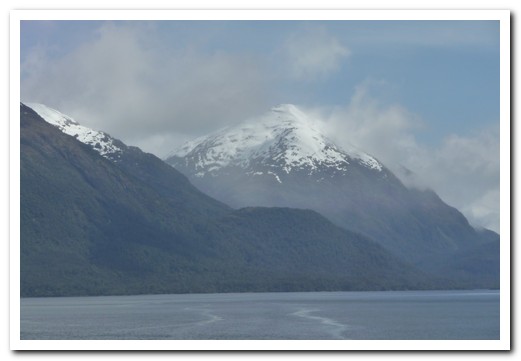
Fresh snow on the peaks all around
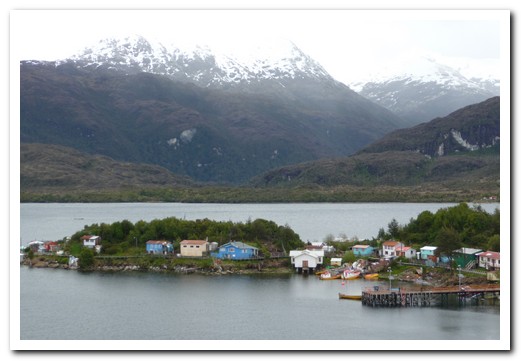
Puerto Eden without a port
 A small section of Pio XI Glacier blending in with the falling snow
A small section of Pio XI Glacier blending in with the falling snow

Weather changes rapidly
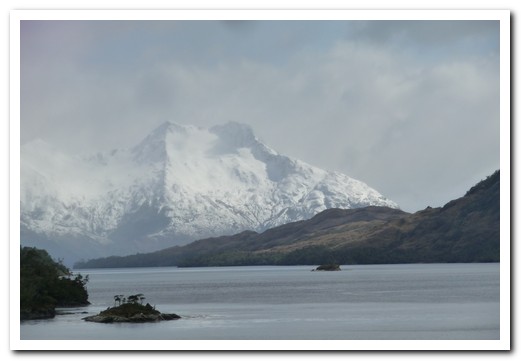
Enroute
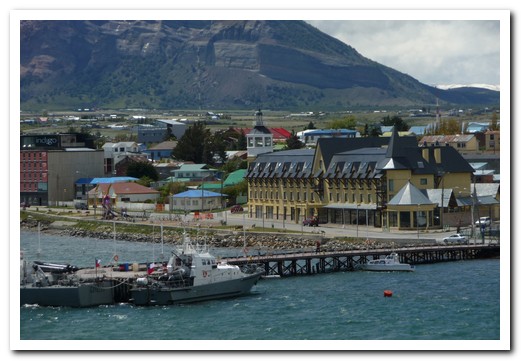
Approaching Puerto Natales
Torres del Paine National Park
10th December 2009
Before we set off for 8 days hiking in the Torres del Paine National Park, we were warned that the Patagonia weather can change in an instant and that strong gusts of cold wind can come out of nowhere to blow someone over. The forecast is always the same – variable!
.
We were fortunate to have perfect weather.
.
We camped in some amazing places, the mountain scenery breathtaking.
.
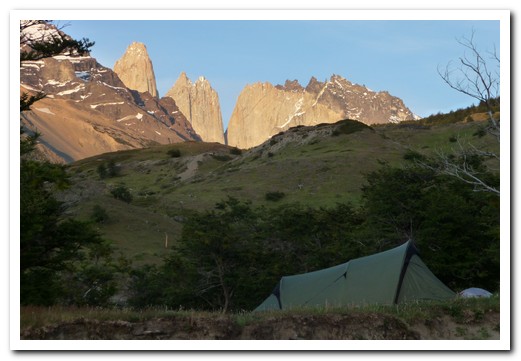
Our campsite in the valley below the Torres (Towers)

5 hours walking later
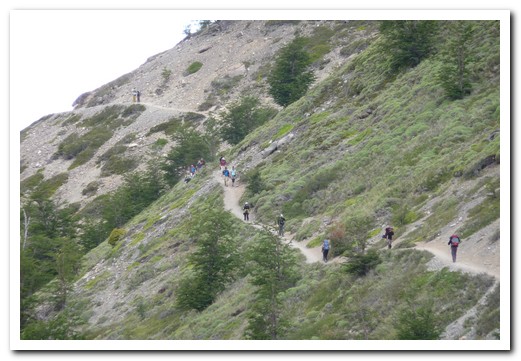
The path up the valley
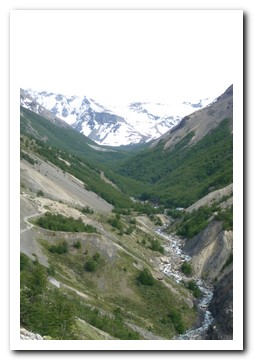
The valley
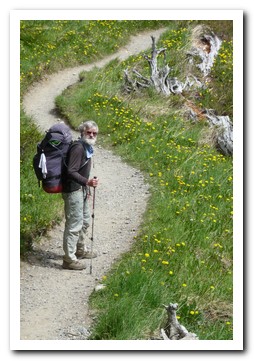
Wildflowers beside the path
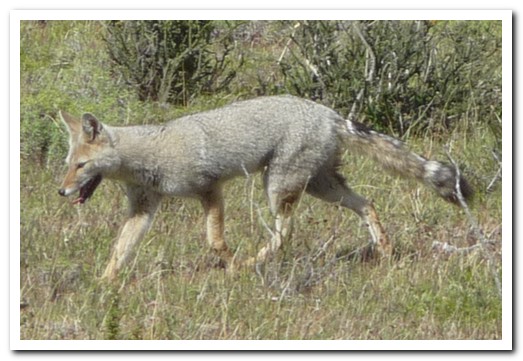
Wild fox
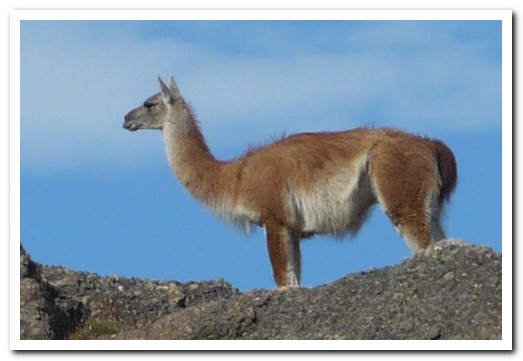
Guanaco
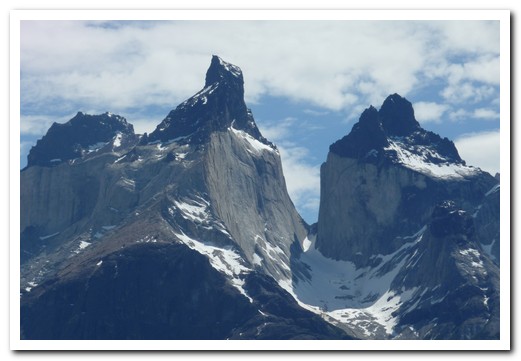
Los Cuernos (Horns)
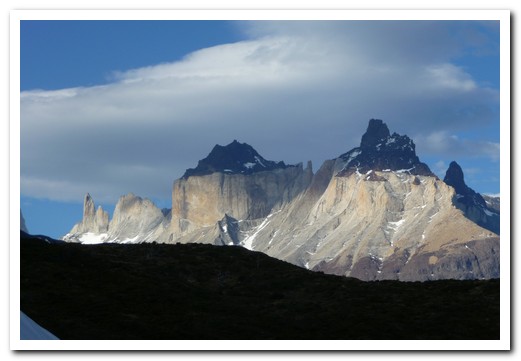
Cuernos from the Valle Frances
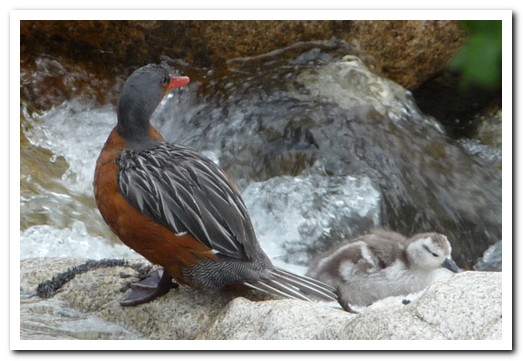
Mother duck giving swimming lessons

More wildflowers
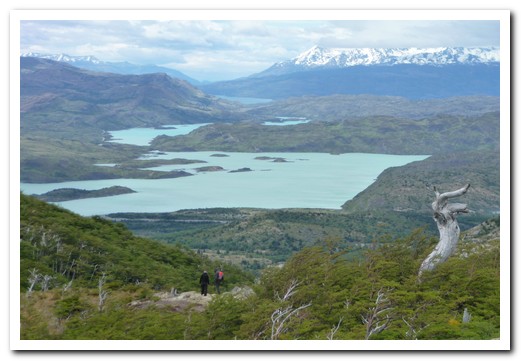
Blue lakes
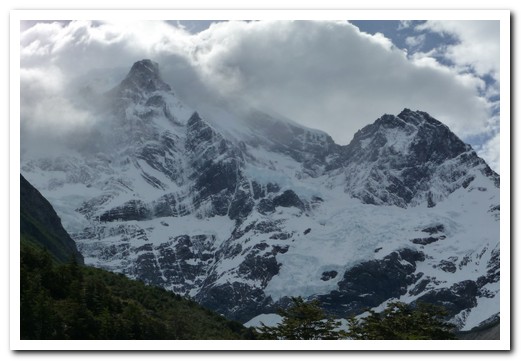
Snow covered mountains in Valle Frances

Bright red flowers cover the slopes
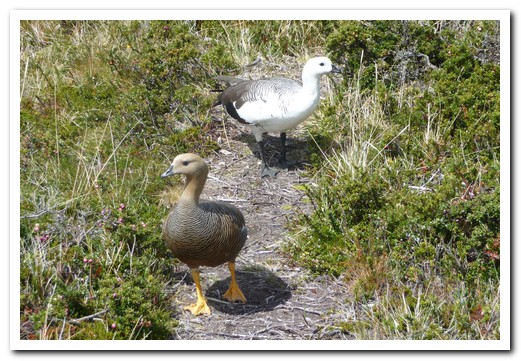
A pair of geese on the path

Looking back
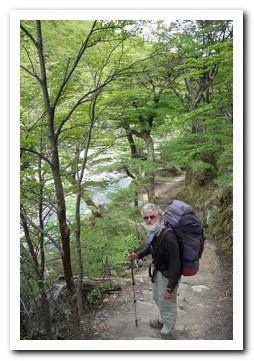
Shady path
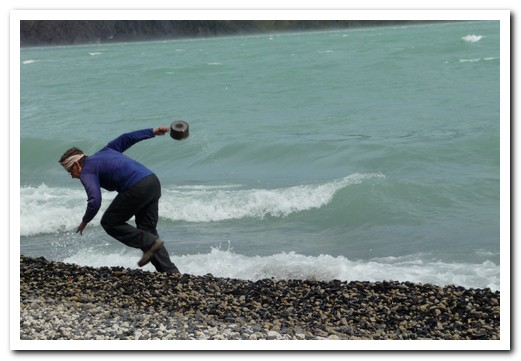
How to get water from the lake without getting wet feet
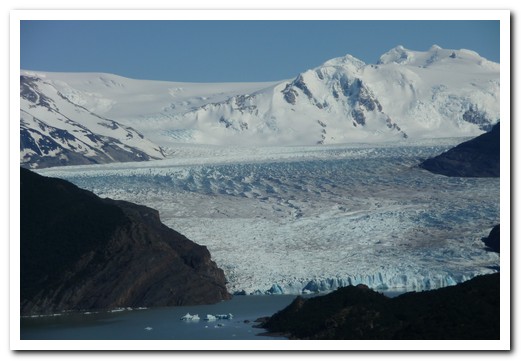
Glacier Grey

Closer to the Glacier Grey
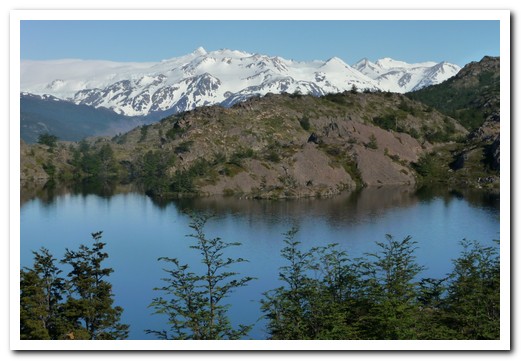
Laguna Los Patos
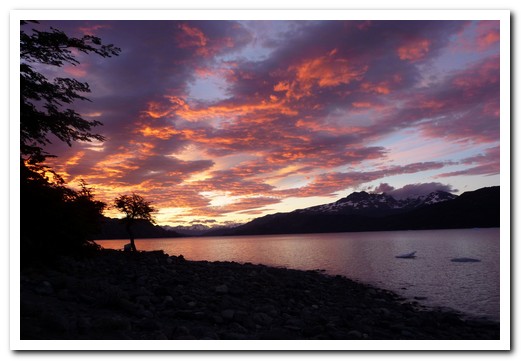
Sunrise over Lago Grey
Tierra del Fuego
16th December 2009
From Puerto Natales we went by bus to Punta Arenas where we visited the penguin colony of Otway Sound.
.
We boarded the Mare Australis for a 5 day expedition to Ushuaia, sailing down the Straits of Magellan, through the fjords of Tierra del Fuego and the Beagle Channel to Cape Horn. We had many opportunities to go ashore by zodiac. The weather and sea conditions were perfect.
.
On a shore trip to Pia Glacier, whiskey with glacier ice was waiting for us. That evening the boat sailed down Glacier Alley. As we passed by German Glacier we were served German beer and sausages. A short time later we passed French Glacier and out came the champagne and cheese. Passing the Italian Glacier we had red wine and pizza, and the Holland Glacier it was Dutch beer and potato croquettes.
.
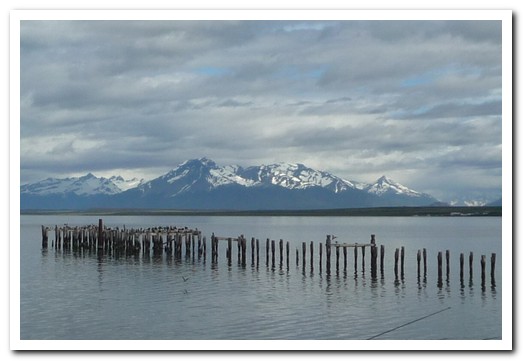
Puerto Natales harbour
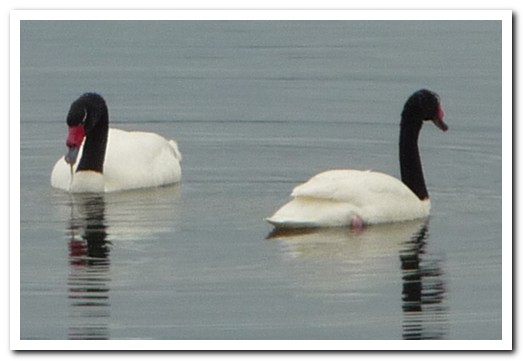
Black neck swans
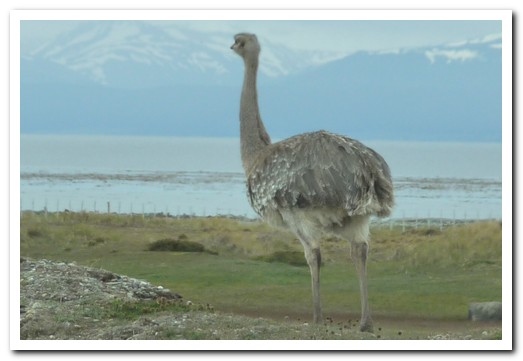
Ñandu
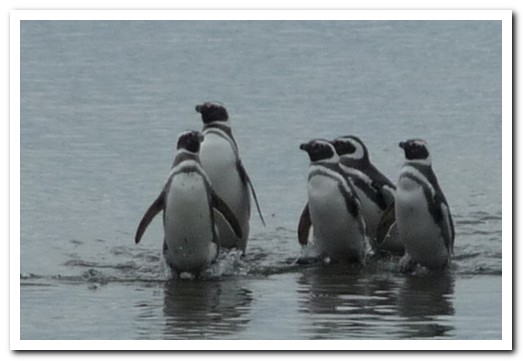
Penguins of Seno Otway
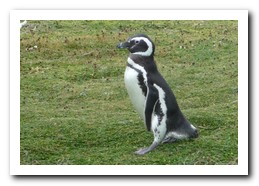
Magellan penguin
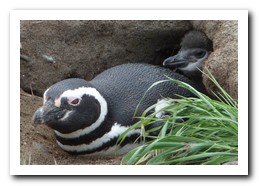
Mother and chick
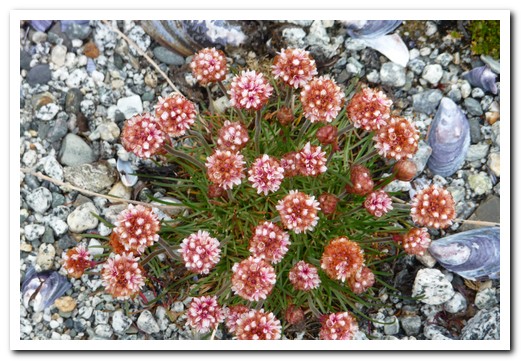
Discarded mussel shells among coastal flowers

The Mare Australis
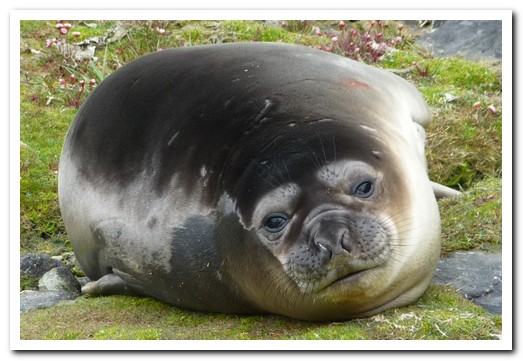
Baby seal sunning itself

Skua landing
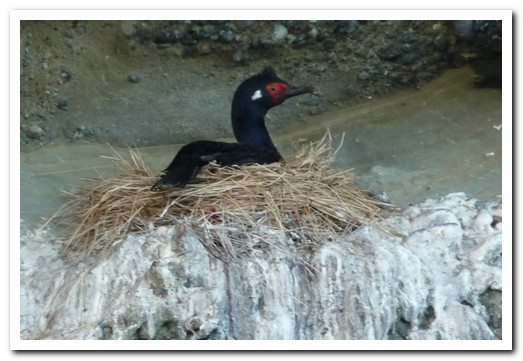
Rock cormorant on a cliff top nest
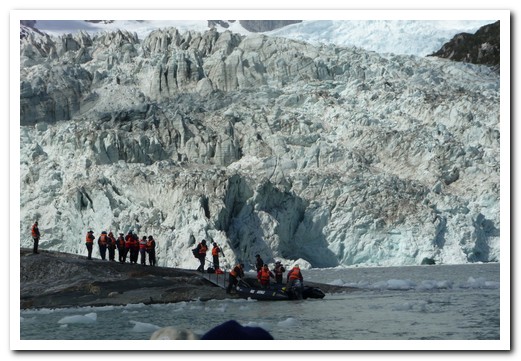
Pia Glacier
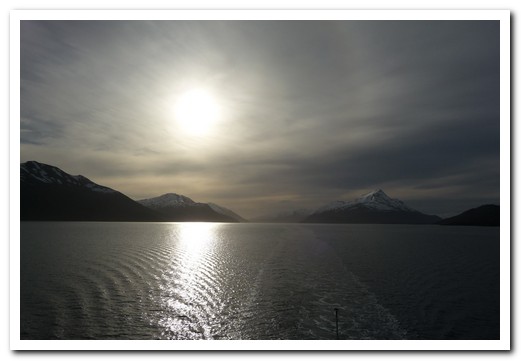
Sailing down Glacier Alley in the evening
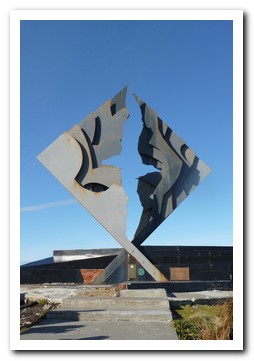
The albatros monument on Cape Horn Island for the sailors who lost their lives here
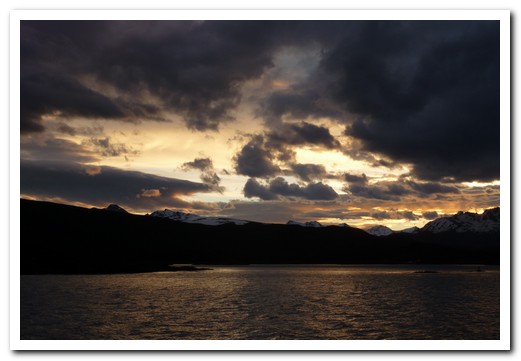
A spectacular sunset for the last night of our cruise
Santiago
11th February 2010
Santiago is a pleasant city to spend a few days, with some leafy cobbled streets and interesting buildings. We were able to catch some street theatre, where a giant wooden puppet performed for the crowds.
.
There are vineyards to the south, easily accessable by public transport. We visited Concha y Toro as we have sampled a lot of of their Casillero de Diablo wines in Australia. We like the legend that the devil lives in the cellar. The owner started the rumour many years ago in order to stop his workers from stealing his best wines, worked too.
.
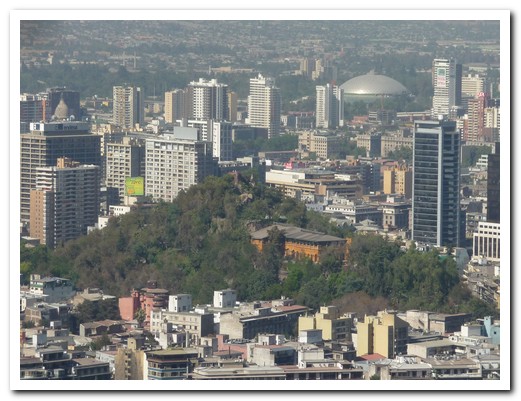
Downtown Santiago
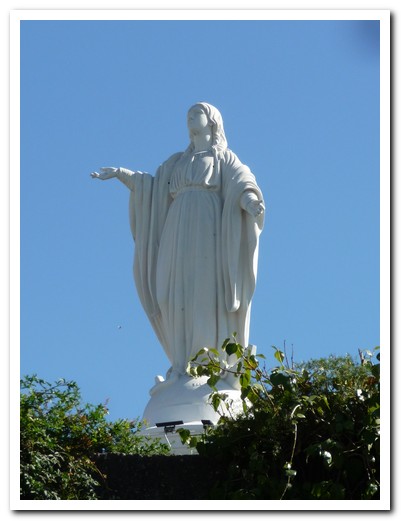
Statue of the Virgin on Cerro San Cristobel
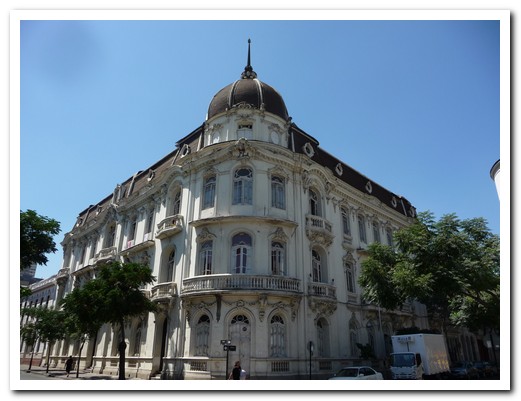
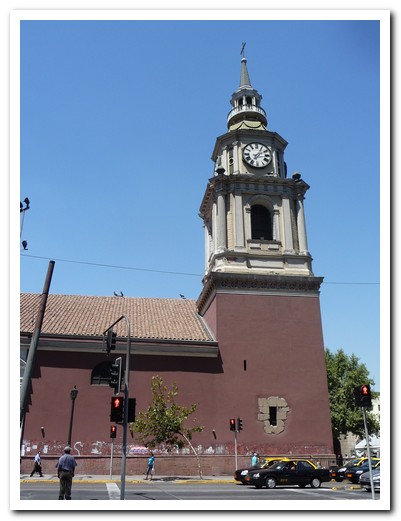
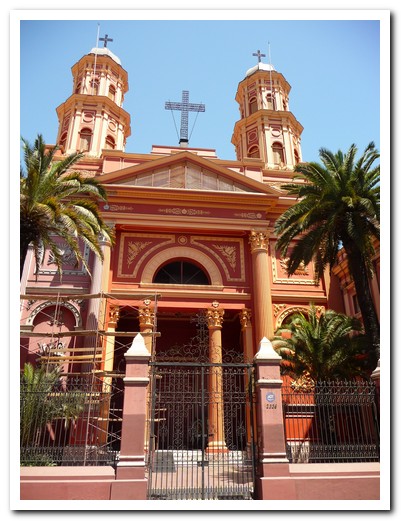

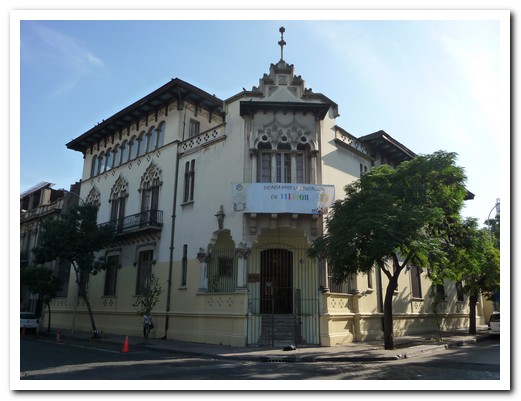

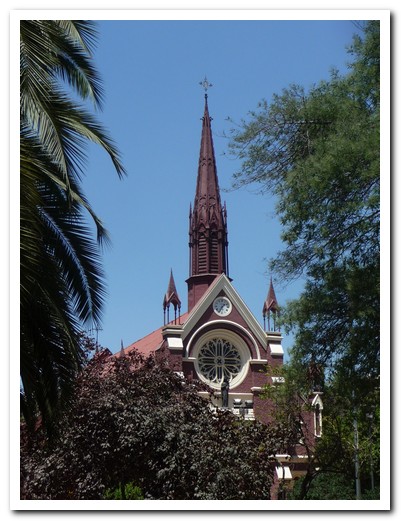


The little giant (puppet)
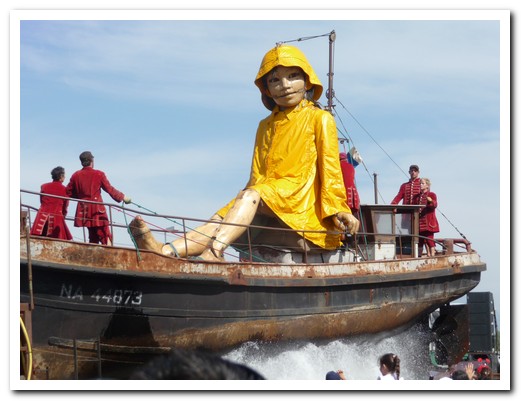
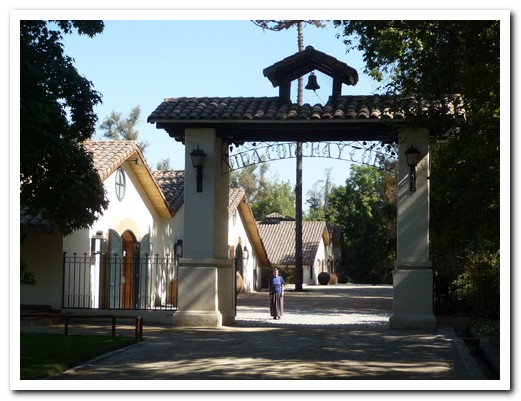
Concha y Toro vinyard
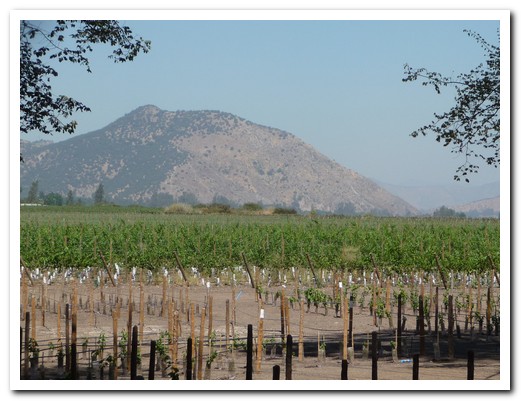
Grapes for the best wines are grown here

El diablo in the cellar
Easter Island (Isla de Pascua)
18th February 2010
We made a last minute decision to visit Easter Island during their annual Tapati Rapa Nui Festival, and on arrival became caught up in a parade of half naked, decorated islanders.
.
To see for ourselves those giant statues (Moai) was really something, and on a visit to the volcano quarry many unfinished heads could be seen scattered about. There are some 800 around the island ranging from 2 metres to 21 metres high.
.
The laid back capital Hanga Roa has no high rise buildings and it is not unusual to see people riding horses through town. The fat fried empanadas stuffed with fresh tuna and cheese were irresistible.
.
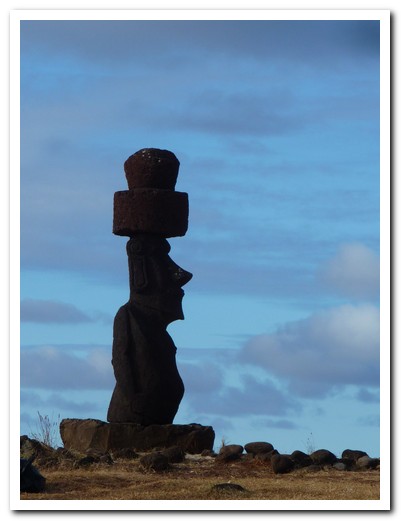
Moai at dawn
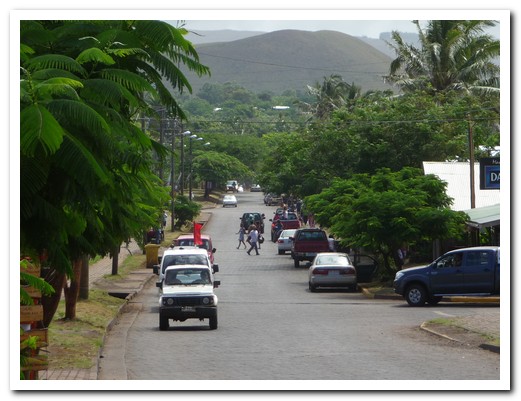
Hanga Roa town - main street
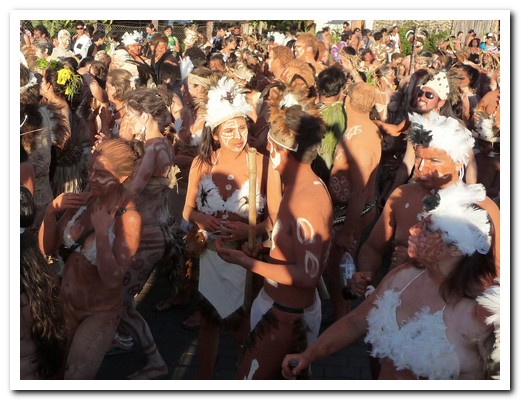
Tapati Rapa Nui festival body painting competition

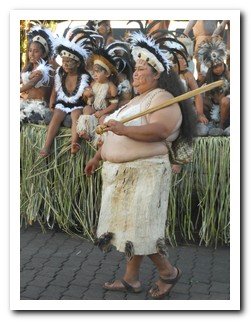
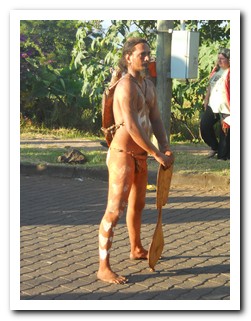
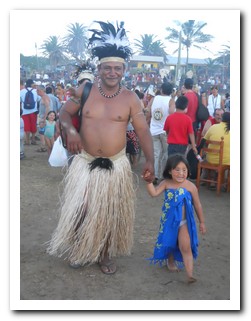
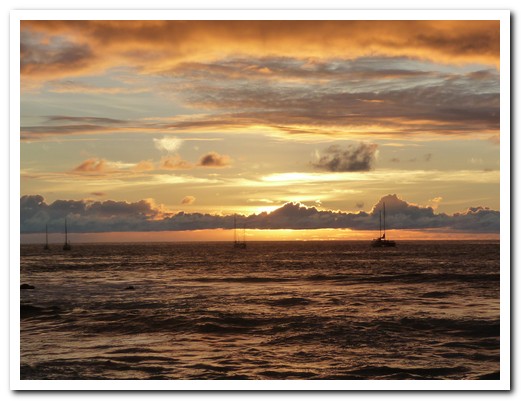
Sunset over the water
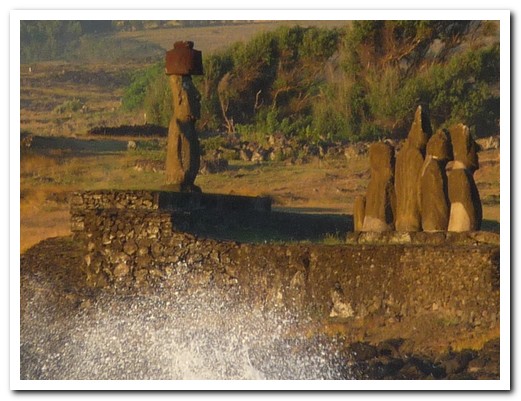
All the Moai (except 7) faced inland towards the villages
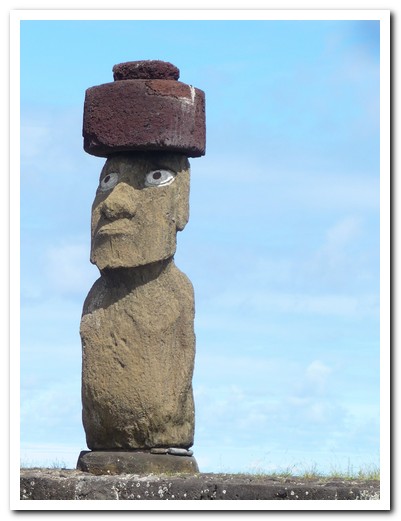
Once the eyes (made of coral) were in place, the Moai became alive
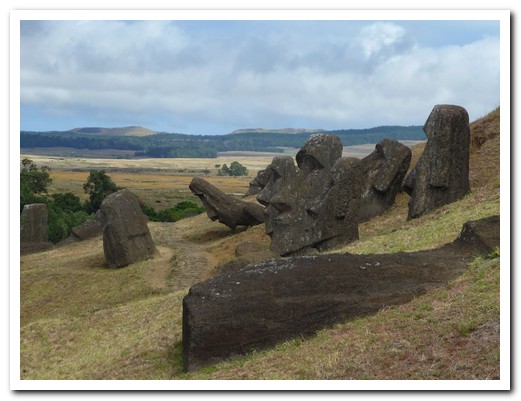
Moai abandoned at the quarry
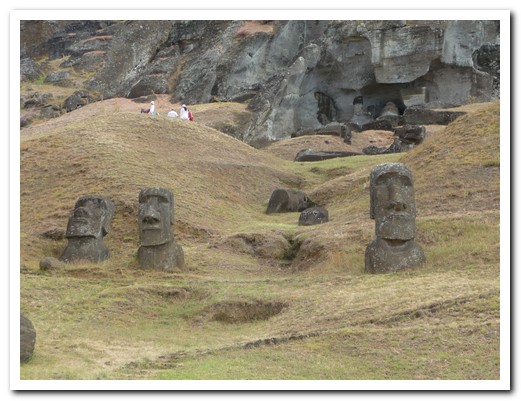
Volcano quarry where the Moai were carved
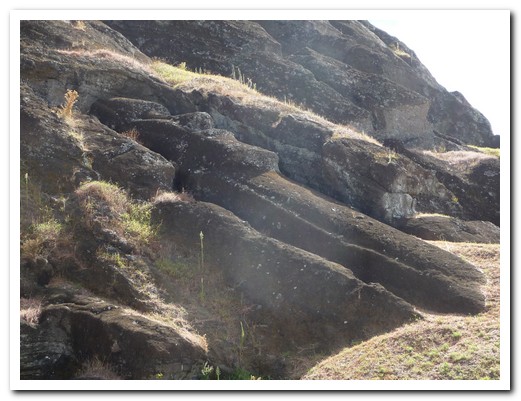
The largest Moai at 21 meters high, lies half finished
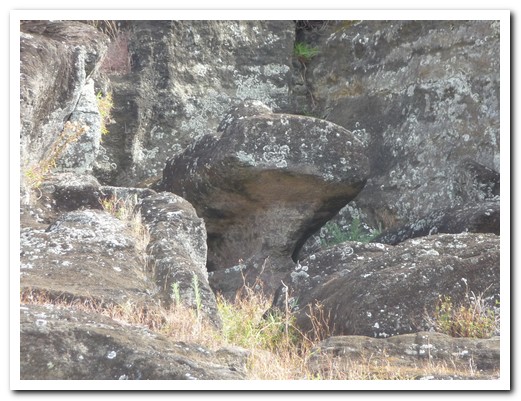
The statues were carved leaving a keel which was later removed
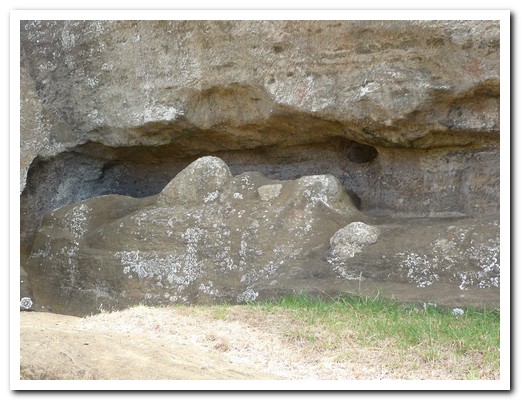
Still unfinished
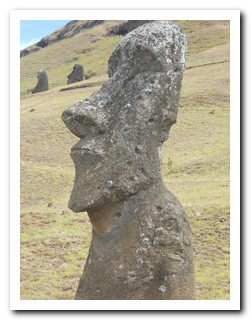
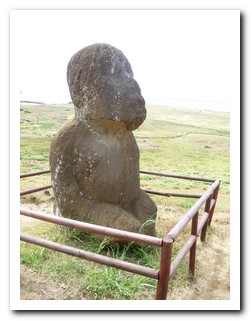
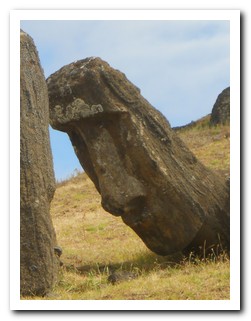
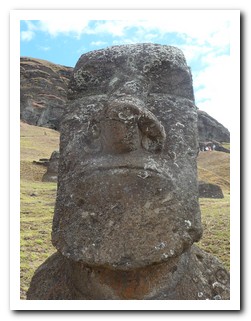
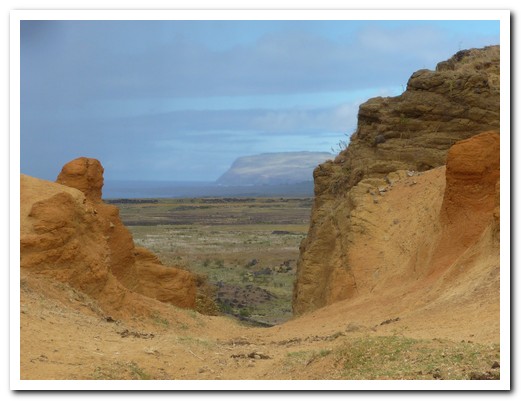
Cutting made in the rim of the volcano to get the statues out
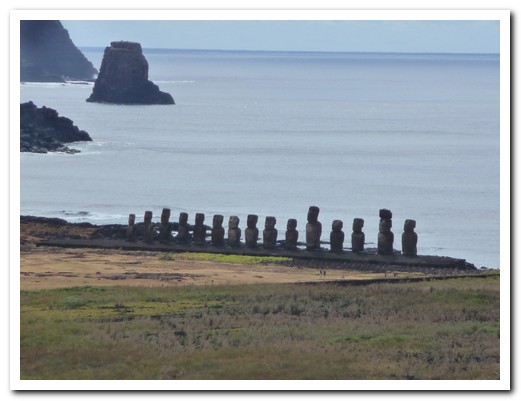
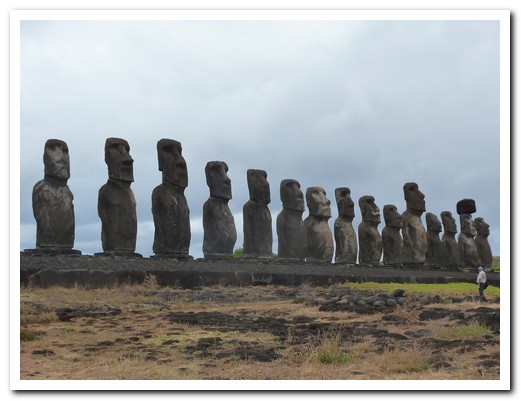
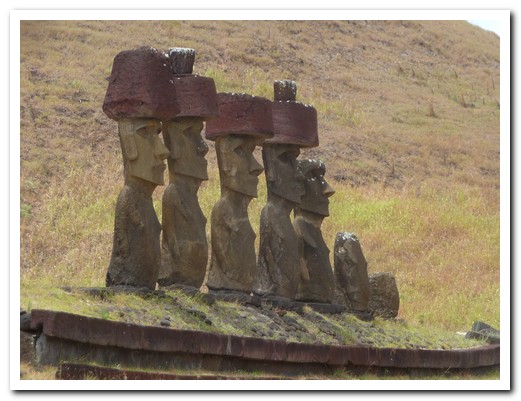
The red top knots were a later style
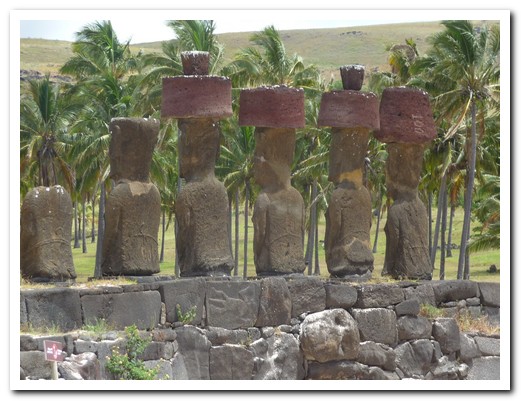
Rear view - the platforms they sat on were altars
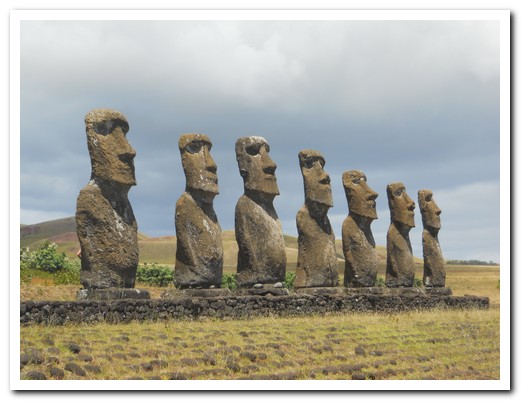
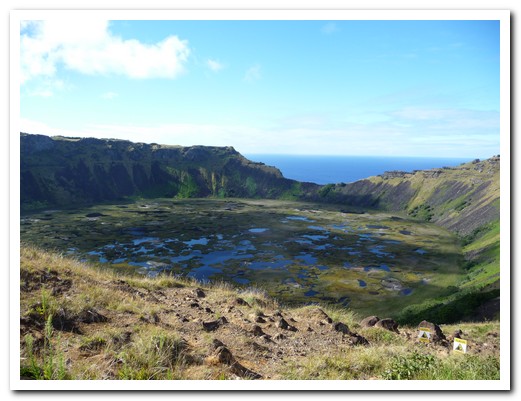
The crater of one of the many extinct volcanoes on the island
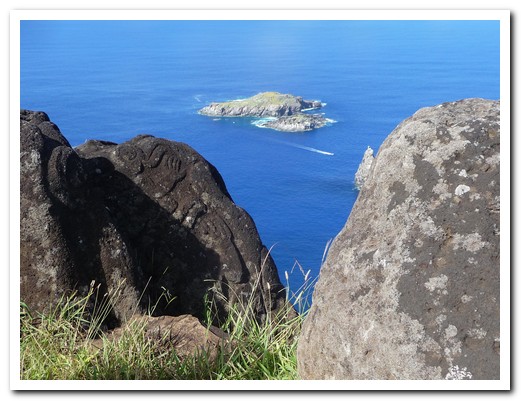
Petroglyph on a rock at Orongo ceremonial village
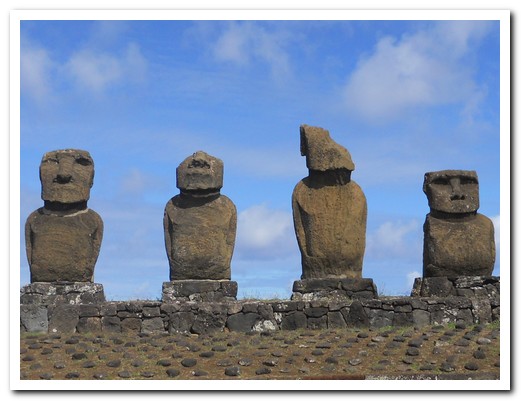
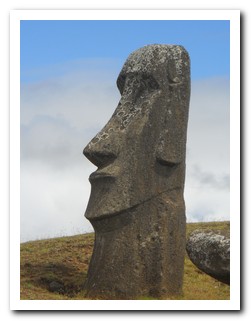
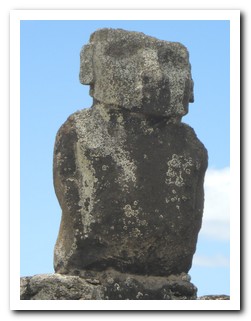
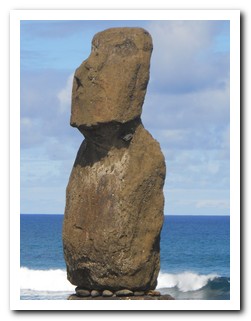
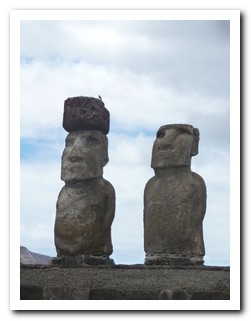
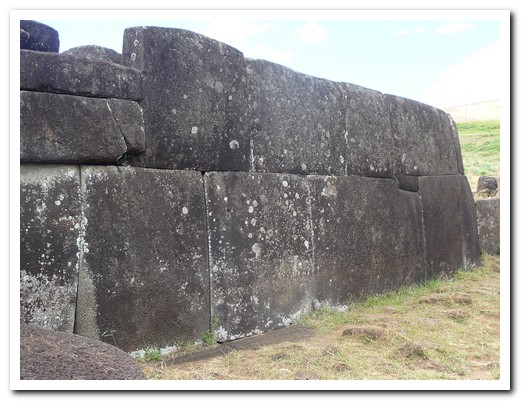
Could The Incas have made this platform?
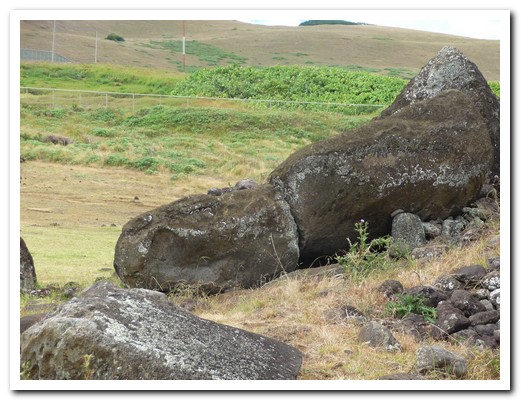
All the Moai were destroyed in the 19th centuary, not all have been restored
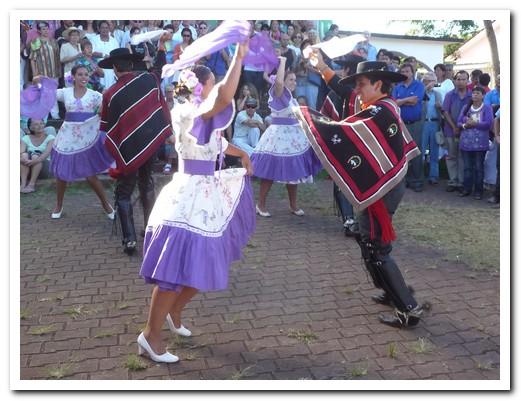
Folk dancing reminds us that this is Chile after all
Viñas de Chile
26th February 2010
Most of the wine of Chile is produced in the valleys within a few hours drive of Santiago. 85% of Chile´s wine is exported, and almost all the good stuff. If you want to try excellent Chilean wines you need to go to the wineries.
.
So we headed south to began our tasting in the Maule Valley around Talca, then moved on to the Colchagua Valley centered on Santa Cruz. These valleys are famous for their red wines, especially Cabernet Sauvignon and Carménère. The vines were full of fruit, ready to be picked in about 2 weeks. One winery (Viña Gillmore) started the tour with a tasting the various grape varieties growing in the vineyard, before moving on to sample the finished wines.
.
The Casablanca Valley, northwest of Santiago, produces some excellent white wines. We tasted some great Sauvignon Blanc and Chardonnay as well as a beautiful Pinot Noir at Viña Casas del Bosque.
.
.
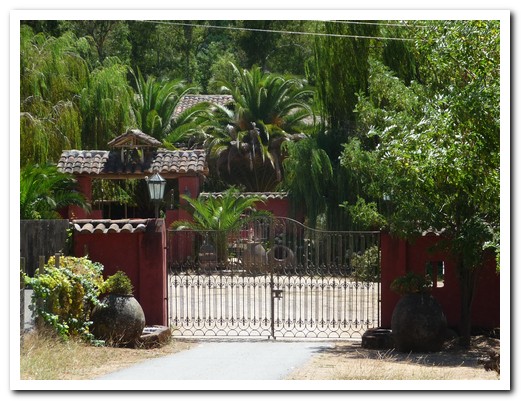
Viña Gillmore, near Talca (Maule Valley)
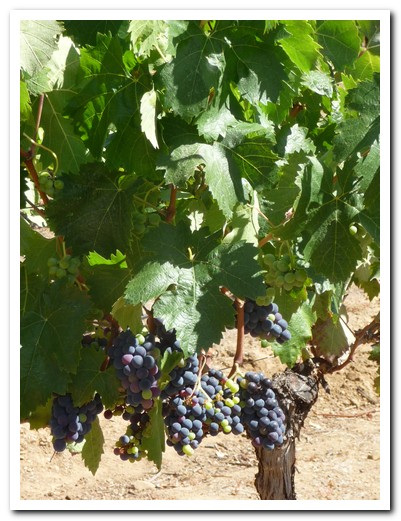
The grapes are starting to ripen in February
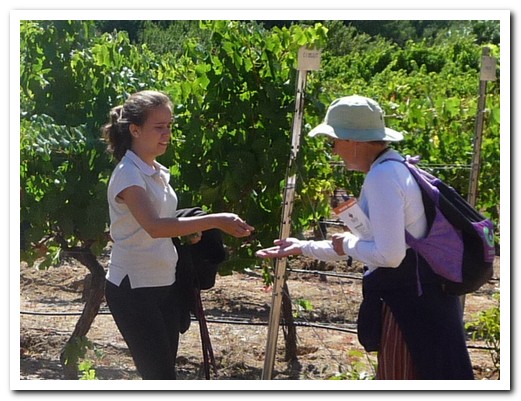
Tasting the grapes in the vineyard

Viña Balduzzi in San Javier (Maule Valley)

Church at Santa Cruz

Colonial building in Santa Cruz
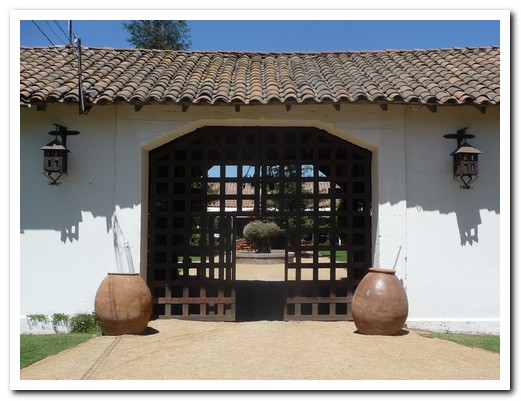
Entrance to Viña Viu Manent (Colchagua Valley)
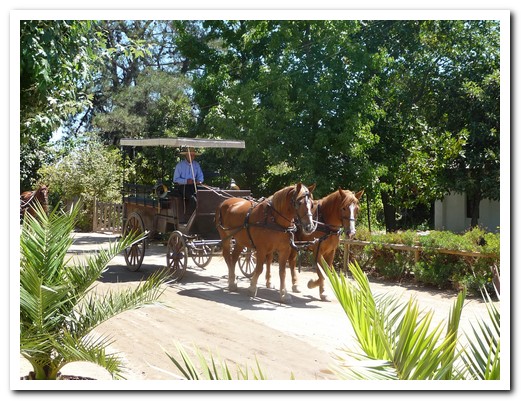
Viña Viu Manent offers horse drawn carriage tours

Viña Las Niñas - all female winery in the Colchagua Valley
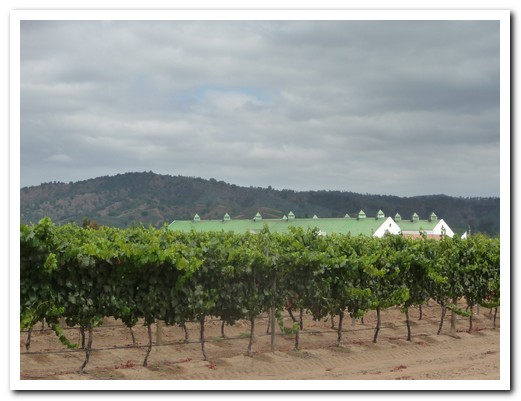
Viña Casas del Bosque (Casablanca Valley)